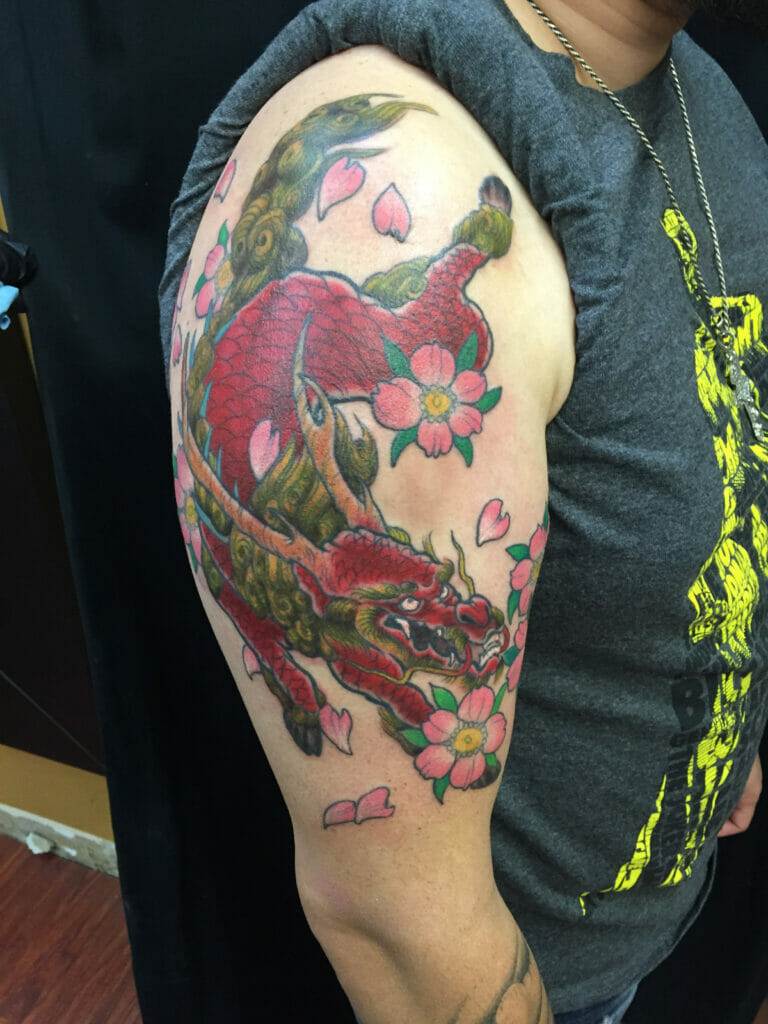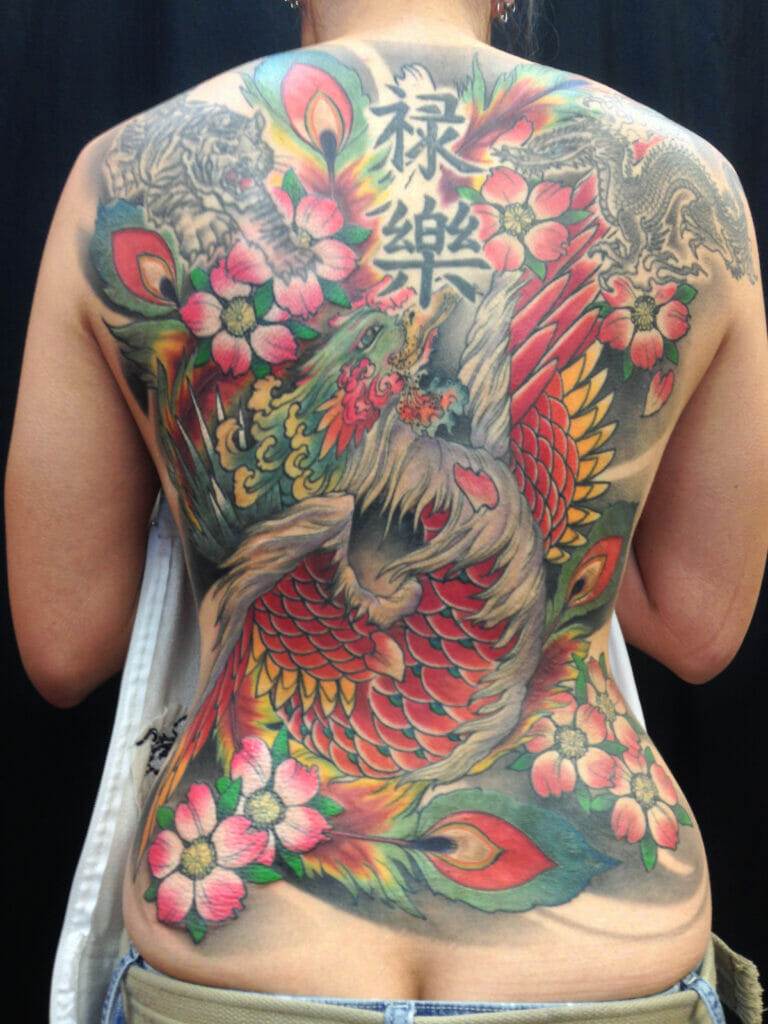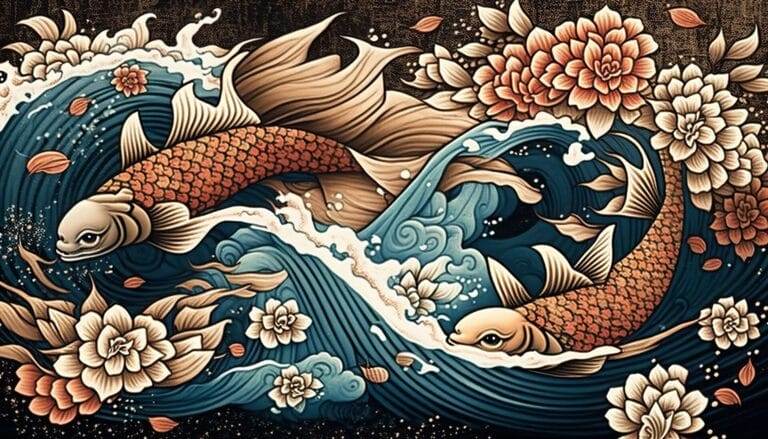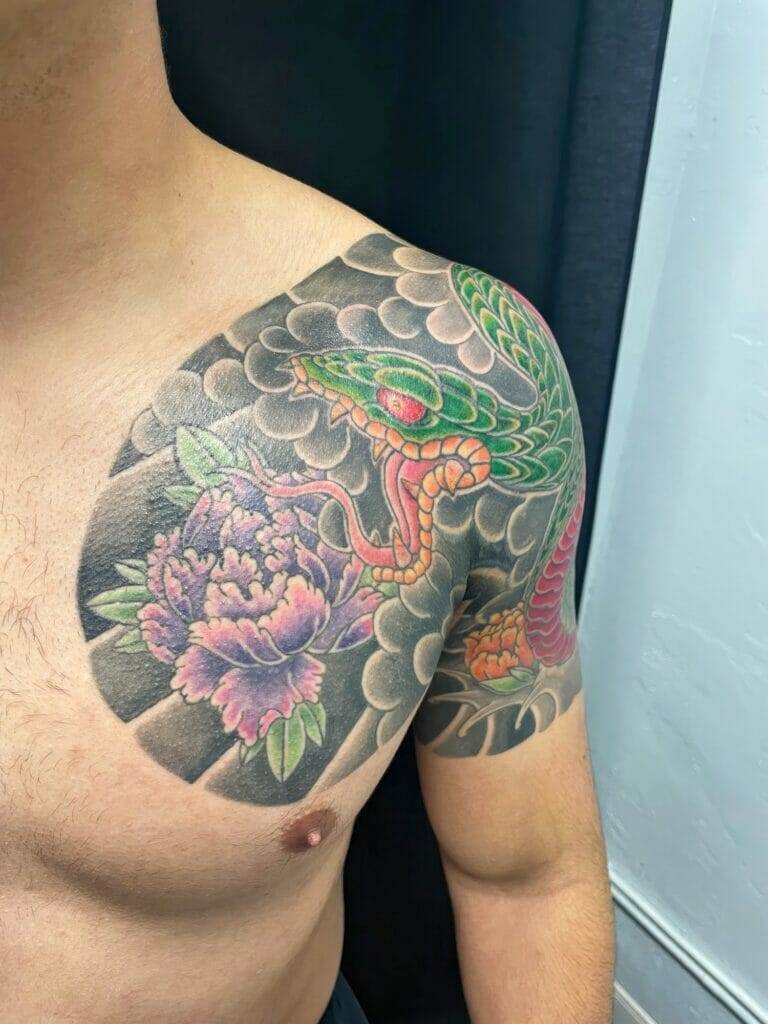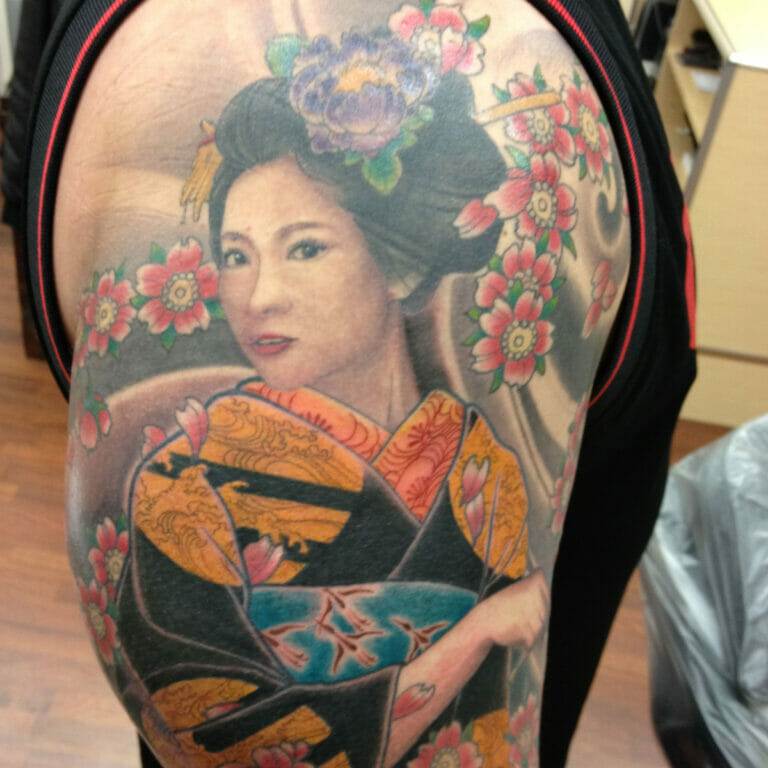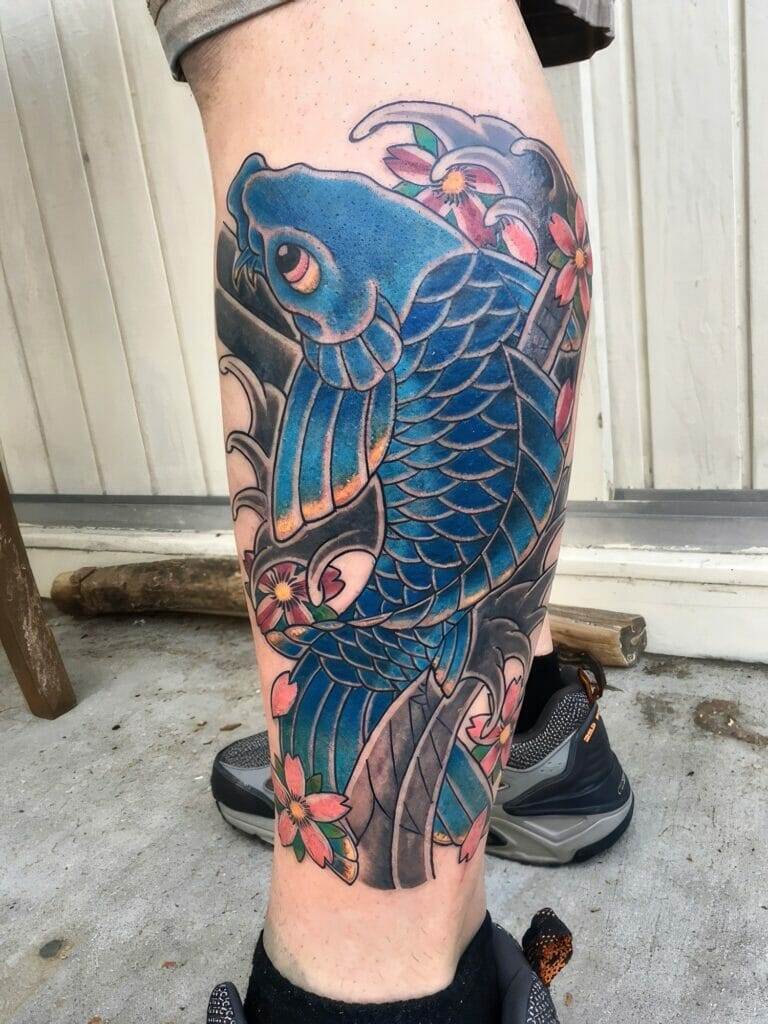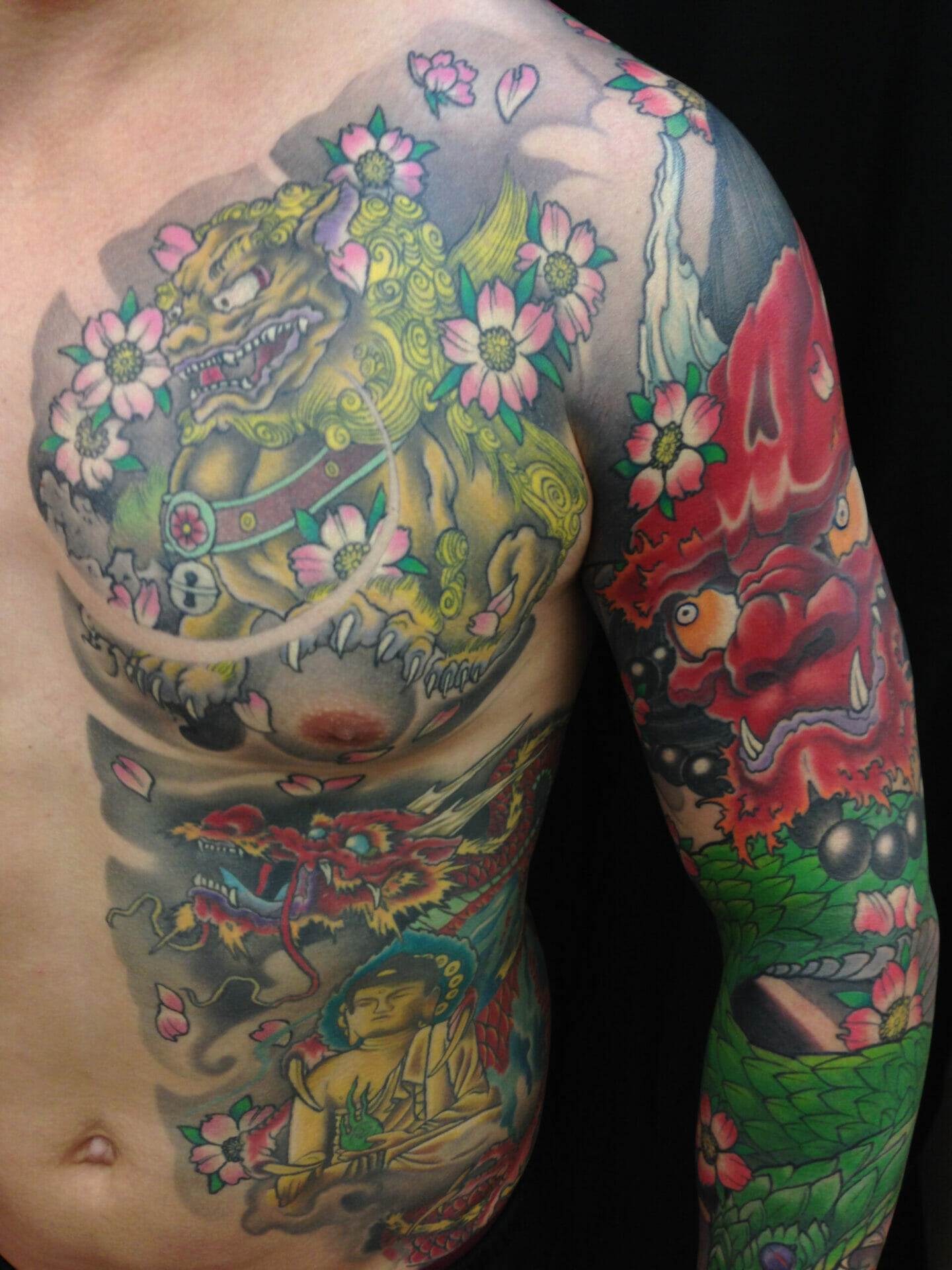
Japanese tattoo art, also known as irezumi, has gained immense popularity both in Japan and around the world. With its rich history and intricate designs, Japanese tattoos have become a symbol of cultural identity and artistic expression. From traditional motifs to modern interpretations, Japanese tattoo art continues to captivate people with its beauty and symbolism.
Historical Significance of Tattoos in Japan
Tattoos have a long history in Japan, dating back to ancient times. In the Yayoi period (300 BC – 300 AD), tattoos were used for decorative purposes and as a form of identification. However, during the Edo period (1603-1868), tattoos became associated with criminality and were used to mark criminals as a form of punishment. This led to the criminalization of tattoos and their association with the yakuza, the Japanese mafia.
In recent years, there has been a resurgence of tattoos in Japan. While tattoos are still stigmatized to some extent, especially in more conservative areas, they have become more accepted in mainstream society. Many young people in Japan now view tattoos as a form of self-expression and a way to showcase their individuality.
The Evolution of Japanese Tattoo Designs
Traditional Japanese tattoo styles are characterized by bold lines, vibrant colors, and intricate details. Some of the most popular motifs include dragons, phoenixes, koi fish, cherry blossoms, samurai warriors, geishas, and waves. These designs often tell stories or convey symbolic meanings.
In the late 19th century, Western tattoo art began to influence Japanese designs. Western-style tattoos introduced shading techniques and a wider range of colors, which added depth and dimension to traditional Japanese motifs. This fusion of styles gave rise to a new generation of tattoo artists who blended traditional and modern elements in their work.
The Symbolism Behind Mythical Creatures in Japanese Tattoo Art
Dragons, phoenixes, and kirin are commonly depicted in Japanese tattoo art and hold significant symbolism in Japanese culture. Dragons are seen as powerful and benevolent creatures that bring good fortune and protect against evil spirits. Phoenixes symbolize rebirth and immortality, while kirin represent wisdom and good luck.
These mythical creatures are often portrayed in Japanese tattoo art to convey strength, resilience, and protection. They are believed to bring positive energy and serve as guardians for the wearer.
The Significance of Dragons and Their Representation in Japanese Culture
Dragons hold a special place in Japanese mythology and folklore. They are often associated with water, which is considered a source of life and purification. In Japanese culture, dragons are seen as divine creatures that possess supernatural powers.
In Japanese tattoo art, dragons are depicted as majestic creatures with scales, horns, and claws. They are often shown in dynamic poses, surrounded by clouds or waves. The dragon’s body is usually adorned with intricate patterns and vibrant colors, symbolizing its strength and vitality.
The Meaning Behind Koi Fish Tattoos

Koi fish have deep symbolic meaning in Japanese culture. They are associated with perseverance, determination, and the ability to overcome obstacles. Koi fish are known for their ability to swim upstream against strong currents, which is seen as a metaphor for overcoming adversity.
In Japanese tattoo art, koi fish are often depicted swimming upstream or leaping out of water. The colors of the koi fish also hold significance. A black koi fish represents overcoming obstacles, a red koi fish symbolizes love and passion, a blue koi fish represents tranquility and serenity, and a yellow koi fish symbolizes wealth and prosperity.
The Symbolism of Cherry Blossoms in Japanese Tattoo Art
Cherry blossoms, or sakura, have great cultural significance in Japan. They represent the transient nature of life and the beauty of impermanence. Cherry blossoms bloom for a short period of time, usually in spring, and then quickly fade away. This fleeting beauty is seen as a reminder to cherish the present moment.
In Japanese tattoo art, cherry blossoms are often depicted in full bloom, with delicate petals falling gently to the ground. They are associated with femininity, grace, and the ephemeral nature of life. Cherry blossom tattoos are popular among both men and women and are often combined with other elements such as birds or butterflies.
The Representation of Samurai Warriors in Japanese Tattoos
Samurai warriors played a significant role in Japanese history and culture. They were skilled warriors who followed a strict code of honor known as bushido. Samurai warriors were known for their bravery, loyalty, and discipline.
In Japanese tattoo art, samurai warriors are often depicted wearing traditional armor and wielding weapons such as swords or bows. They are portrayed as strong and fearless warriors, ready to defend their honor and protect their loved ones. Samurai tattoos symbolize courage, loyalty, and the pursuit of excellence.
The Significance of Geisha Tattoos in Japanese Culture
Geishas are traditional female entertainers who are skilled in various arts such as music, dance, and tea ceremonies. They are known for their elegance, grace, and beauty. Geishas play an important role in Japanese society and are considered cultural icons.
In Japanese tattoo art, geishas are often depicted wearing traditional kimono and elaborate hairstyles. They are portrayed as mysterious and alluring figures, representing femininity, grace, and sophistication. Geisha tattoos symbolize beauty, talent, and the pursuit of perfection.
The Symbolism of Waves in Japanese Tattoo Art
Waves hold great symbolism in Japanese culture. They represent the power and unpredictability of nature. Waves can be calm and serene or fierce and destructive, symbolizing the ebb and flow of life.
In Japanese tattoo art, waves are often depicted in various forms, from gentle ripples to crashing waves. They are associated with strength, resilience, and the ability to adapt to change. Waves tattoos are popular among surfers and those who seek a connection with the ocean.
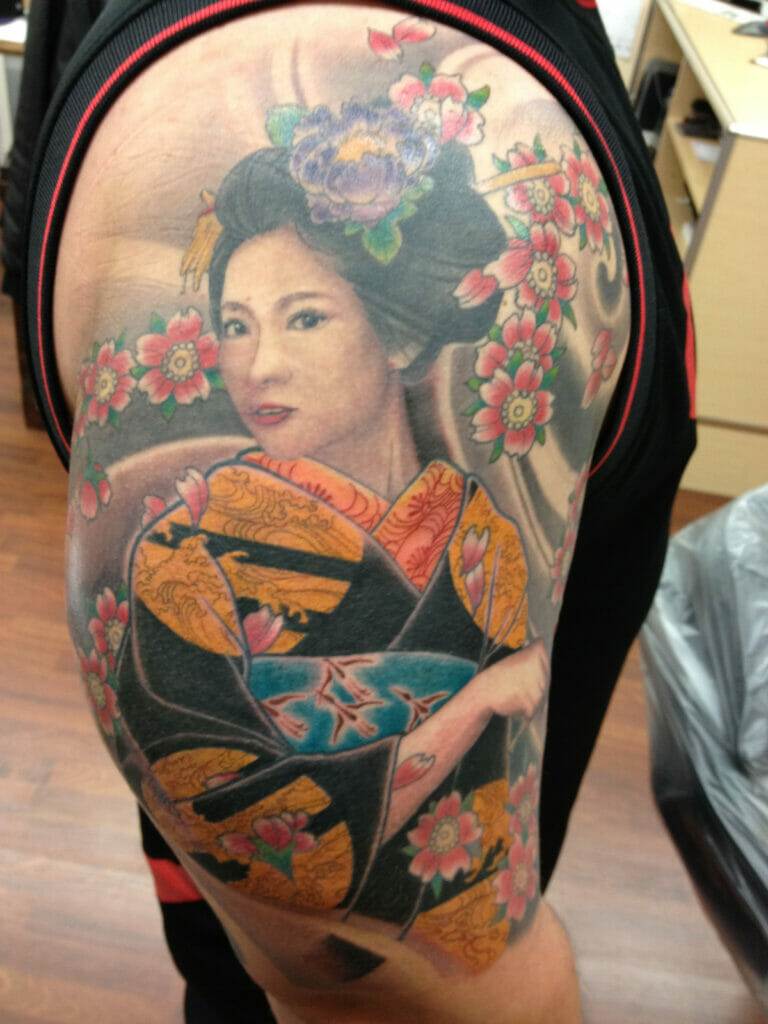
The Modern-Day Popularity of Japanese Tattoo Art and Its Cultural Significance
Japanese tattoo art has gained immense popularity around the world. Many people are drawn to its intricate designs, vibrant colors, and rich symbolism. Japanese tattoos have become a form of self-expression and a way to connect with Japanese culture and heritage.
In modern times, Japanese tattoo art has also become a means of preserving traditional Japanese craftsmanship. Many tattoo artists in Japan are trained in traditional techniques and strive to uphold the cultural significance of irezumi. This has led to a resurgence of interest in traditional Japanese tattoo styles and a renewed appreciation for their artistic value.
Japanese tattoo art has a long and fascinating history, with deep cultural significance. From its ancient origins to its modern-day popularity, Japanese tattoos continue to captivate people with their beauty and symbolism. Whether it’s the mythical creatures, samurai warriors, geishas, or natural elements like waves and cherry blossoms, each design tells a story and holds profound meaning. Japanese tattoo art is not just about aesthetics; it is a reflection of Japanese culture, history, and values.


